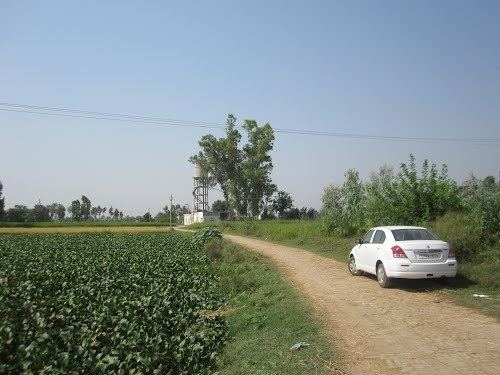Country India Time zone IST (UTC+5:30) Area 2,683 km² Population 2.491 million (2011) | Website amritsar.nic.in Literacy 76.3% | |
 | ||
Points of interest Golden Temple, Jallianwala Bagh, Durgiana Temple, Akal Takht, Maharaja Ranjit Singh Mu Colleges and Universities Guru Nanak Dev University, BBK DAV College for Women, Government Medical College, Indian Institute of Manage | ||
Amritsar district (Punjabi: ਅੰਮ੍ਰਿਤਸਰ ਜ਼ਿਲ੍ਹਾ) is one of 22 districts located in the Majha region of the state of Punjab in North India. The city of Amritsar is headquarters of this district.
Contents
Map of Amritsar, Punjab
As of 2011 it is the second most populous district of Punjab (out of 22), after Ludhiana.
History
During British Rule Amritsar was part of Lahore Division and was administratively subdivided into 3 tehsils namely - Amritsar, and Ajnala. Tarn Taran has itself formed into a district headquarters. However, as part of the partition of India in 1947 Amritsar district was separated from the rest of the division and awarded to India. During the partition period, the Muslim population of the district, some 30%, left for Pakistan while Hindus and Sikhs from West Punjab in newly created Pakistan migrated in the opposite direction.
The Sikhs were a majority in the Amritsar district constituting about 60% of the population before the partition of 1947. According to 2001 census, Sikhs make up about 77% while Hindus make 21% of the total population of the district.
The Majha Region is the Birthplace of the Sikh religion, and the Birthplace of the Sikh Misls (Sikh Confederacy).
Demographics
According to the 2011 census Amritsar district has a population of 2,490,891, roughly equal to the nation of Kuwait or the US state of Nevada. This gives it a ranking of 175th in India (out of a total of 640). The district has a population density of 932 inhabitants per square kilometre (2,410/sq mi) . Its population growth rate over the decade 2001-2011 was 15.48%. Amritsar has a sex ratio of 884 females for every 1000 males, and a literacy rate of 77.2%.
District administration
Amritsar District Borders the Pakistani Punjab Districts of Lahore, Kasur, Shiekhupura along the Ravi River Firozpur District to the South along Sutlej River, Kapurthala District along the Beas River and Gurdaspur District to the North.
